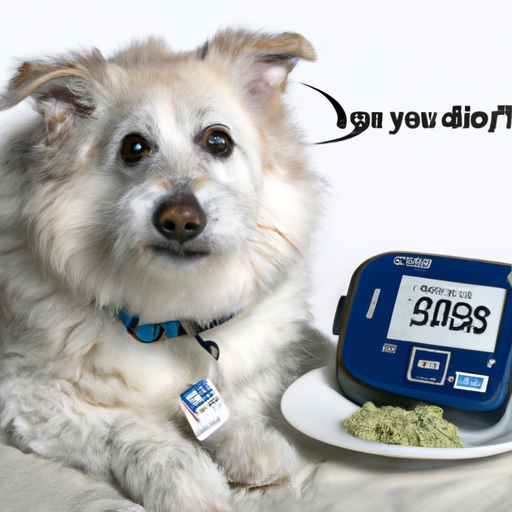As a caregiver, you may think of diabetes as a human disease. In reality, this long-term condition also affects our canine companions. Understanding the symptoms, treatment, and management of diabetes in dogs is critical to ensure their well-being.
1. Understanding Diabetes in Dogs
Diabetes in dogs mirrors human diabetes in many ways. There are two types:
- Type I diabetes, where the dog’s body doesn’t produce enough insulin.
- Type II diabetes, where the dog’s body can’t use insulin properly.
Most dogs suffer from Type I diabetes, requiring lifelong insulin therapy.
2. Recognizing the Symptoms
Early detection is vital for managing diabetes in dogs. Look out for the following:
- Excessive thirst and urination
- Unusual weight loss despite a good appetite
- Lethargy and depression
If your dog shows these signs, schedule a vet appointment immediately.
3. The Diagnosis Process
Your vet will perform several tests:
- Urine tests to check for glucose or ketones
- Blood tests to measure blood glucose levels
- Fructosamine test for an average glucose level over two weeks
These tests help confirm a diagnosis and rule out other potential causes.
4. Treatment Options
Treatment for diabetes in dogs aims to:
- Normalize blood glucose levels
- Minimize symptoms
- Prevent complications
| Treatment | Description |
|---|---|
| Insulin therapy | Your vet will prescribe a type and dose of insulin suitable for your dog. |
| Diet modification | A high-fiber, low-fat diet can help control blood glucose levels. |
| Regular exercise | Exercise helps regulate blood glucose levels. Establish a consistent routine to avoid fluctuations. |
5. Managing Diabetes at Home
As a caregiver, you’ll play a significant role in managing your dog’s diabetes.
- Administering Insulin: You’ll need to inject insulin into your dog, typically twice daily.
- Monitoring Blood Glucose: Regular home testing ensures your dog’s glucose levels are controlled.
- Maintaining a Routine: Keep your dog’s meal, exercise, and insulin schedule consistent.
Remember, every dog is unique. You and your vet will develop a management plan tailored to your pet’s needs.
6. The Impact on Your Dog’s Life
Diabetes doesn’t have to mean a poor quality of life for your dog. With careful management, your dog can live a happy, healthy life. Regular vet check-ups and strict adherence to the treatment plan are the keys to success.
7. Preventing Diabetes in Dogs
While you can’t prevent Type I diabetes, you can reduce the risk of Type II diabetes by:
- Maintaining a healthy weight for your dog
- Regular exercise
- A balanced, nutritious diet
8. FAQ about Diabetes in Dogs
Q: Can my dog live a normal life with diabetes?
A: Yes, with proper management, dogs with diabetes can lead a normal life.
Q: Is diabetes in dogs curable?
A: While not curable, diabetes in dogs is manageable with insulin therapy and lifestyle changes.
Q: How often should I check my dog’s blood glucose levels?
A: Your vet will guide you on this, but typically, it’s recommended to test at least once a day.
Q: Can diabetes cause other health problems in dogs?
A: If not managed well, diabetes can lead to complications like cataracts, urinary tract infections, and ketoacidosis.
As a caregiver, understanding diabetes in dogs empowers you to provide the best care for your furry friend. Remember, a diabetes diagnosis isn’t a death sentence. It’s a manageable condition that, with care and attention, won’t stop your pet from enjoying a full, happy life.



